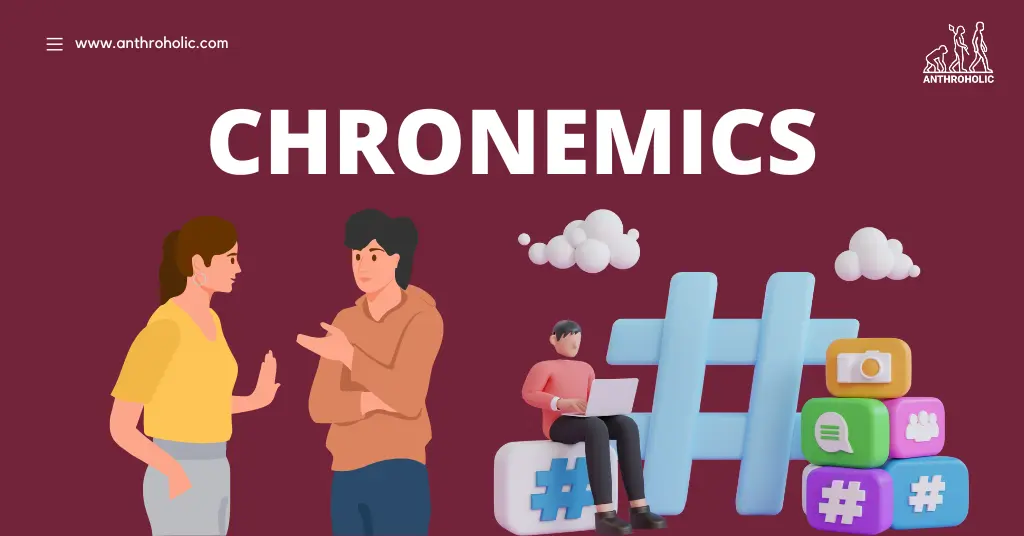AI Answer Evaluation Platform Live Now. Try Free Answer Evaluation Now
Chronemics
Chronemics, the study of the role time plays in communication, is a focal concept in the field of anthropology, where non-verbal communication and cultural norms converge. Anthropologists examine the significance of Chronemics in various cultural contexts, highlighting its impact on interpersonal communication and societal norms.

Chronemics: An Overview
Chronemics, derived from the Greek words ‘chronos’ (time) and ‘semiotics’ (sign), is a sub-field of non-verbal communication that emphasizes the way time influences human communication [1]. The theory was first developed by anthropologist Edward T. Hall in the 1950s to investigate how different cultures understand and utilize time.
Categories of Chronemics
Chronemics can be categorized into two main categories:
- Monochronic Cultures: These societies view time linearly, treating it as a finite resource that can be lost or gained. Monochronic cultures prioritize punctuality, schedules, and task accomplishment. Notable examples include Germany, Switzerland, and the United States [2].
- Polychronic Cultures: These societies perceive time as cyclical and flexible, with a greater emphasis on relationships, traditions, and people. In these cultures, schedules are viewed as fluid, and simultaneous performance of multiple tasks is common. Examples include Latin America, the Middle East, and Africa [3].
| Monochronic Cultures | Polychronic Cultures | |
|---|---|---|
| Time Perception | Linear | Cyclical |
| Value | Punctuality, Task Accomplishment | Relationships, Traditions |
| Examples | Germany, Switzerland, USA | Latin America, Middle East, Africa |
Chronemics and Anthropology
Anthropology studies human societies and cultures and their development. The discipline’s examination of chronemics provides valuable insights into how different cultures perceive, value, and utilize time, reflecting each culture’s unique norms and values. Key areas of anthropological focus include:
- Cultural norms and time: The interpretation of time directly influences societal norms, expectations, and behaviors. For instance, the Japanese culture, known for its punctuality, is heavily influenced by monochronic time perception, and this is manifested in its societal norms such as punctuality, respect for schedules, and efficient time management.
- Time and Social Structure: Chronemics also play a crucial role in defining social structures. In many tribal societies, time perception is linked to natural phenomena such as seasons or lunar cycles. This connection between time and nature is often a guiding force in social activities, rituals, and communal behaviors.
- Non-verbal communication and time: In communication, how time is managed can signal power dynamics. In professional settings, for instance, making someone wait can be a sign of power, whereas being perpetually late can signal a lack of respect or disorganization.
Chronemics in the Digital Age
The advent of the digital age has revolutionized how we understand and manage time, significantly impacting chronemics. Digital communication often blurs traditional time boundaries, fostering a new era of instantaneous communication that has reshaped social and professional interactions.
- 24/7 Accessibility: With the ubiquity of smartphones and the internet, people can communicate anytime, anywhere, potentially disrupting traditional monochronic structures.
- Time Zones: Virtual interactions across different time zones have resulted in flexible work hours and multi-tasking, mimicking aspects of polychronic cultures.
- Instantaneous Communication: The expectation of immediate response on digital platforms places new pressures on time management and communication practices.
Conclusion
Chronemics, the study of how time influences communication, provides a fascinating lens through which to examine cultural norms, societal structures, and power dynamics. Understanding chronemics is not only key to appreciating diverse cultural norms around time but also crucial in the evolving digital landscape. As we increasingly move towards a global society, acknowledging and respecting these different time perceptions can foster more effective and empathetic communication.
References
[1] Hall, E. T. (1959). The Silent Language. Doubleday.
[2] Levine, R. (1997). A Geography of Time. Basic Books.
[3] Hall, E. T., & Hall, M. R. (1990). Understanding Cultural Differences: Germans, French and Americans. Intercultural Press.




